Tame your garden with these pruning tools! I'll show you how to use pruning shears, loppers and saws to whip your yard into shape!

Creating a beautiful garden is all about coaxing your plants to look their best. To do that, you need to wield a variety of different tools. There isn't a one size fits all approach to pruning, but there's usually one tool that will give you the best results.
Sometimes, you need the surgical precision of pruning snips to deadhead flowers that are past their peak. Other times, you pull out the big pole saw to hack off a branch that's rubbing against the house. You need a variety of pruning tools to get all your gardening tasks done right!
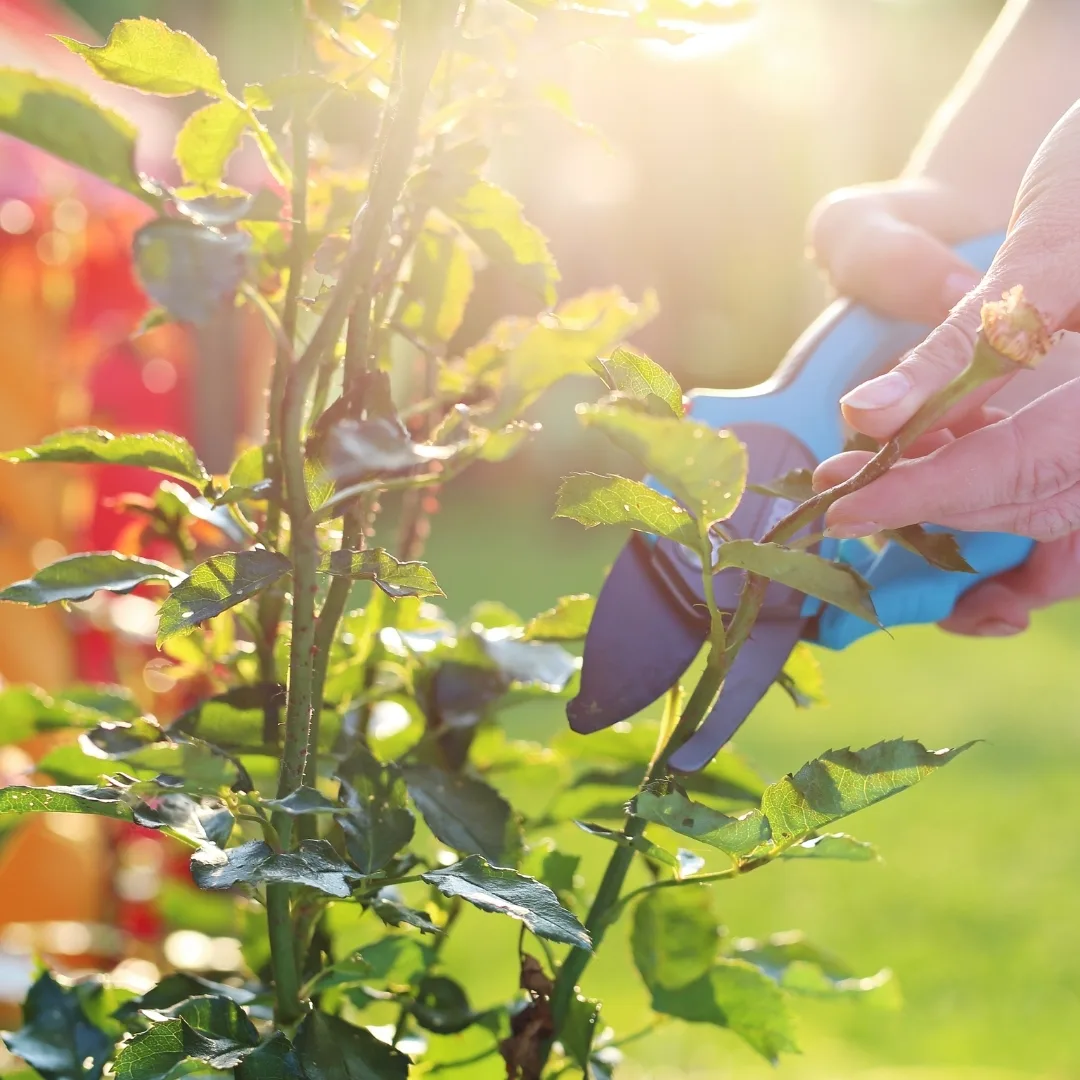
I'll show you the different types of pruning tools and how to use them properly. Then, I'll share some of my pruning tips and answer the most commonly asked questions about this task!
This post contains affiliate links for your convenience. Purchases made through these links may earn me a small commission at no additional cost to you.
How pruning tools cut
Most pruning tools aren't like your regular household scissors. Different methods of cutting can help your plant recover from their trim faster and with less risk of disease. Here are the terms you might come across when shopping for a new pruning tool.
- Bypass - This is a term used for pruning tools that cut similar to scissors. There's a large main blade that slides past a smaller blade. This is the most common type of pruner you'll find.
- Anvil - Anvil shears have a single blade that chops down into a blunt base. Think of it like a knife falling onto a chopping block. These types of cutting tools tend to crush the plant at the bottom of the cut, so it's better to use them for dead, tough branches.
- Ratchet - This type of pruning tool operates by repeatedly opening and closing the handles. Every time you open and close the handles, the shears become tighter instead of springing back. If hand strength is an issue for you, this may be the best solution!
- Saw - This type has a blade with serrated teeth on one side to cut off larger branches in a back and forth motion. Teeth pointed towards the end of the blade means you cut when you push, and teeth pointed towards the handle cut on the pull stroke.
Now, let's discuss some common pruning tools.
Pruning tools and their uses
You can't expect a single pruning tool to do all the jobs in the garden. You want to use the right tool so you get the best results without getting frustrated or damaging the plant. But when you're confronted with a wall of things that cut, chop and saw at the garden center, it might seem a little overwhelming.
Here's a list of common pruning tools that you might see and how they work.
Pruning snips
Pruning snips are a small variation of pruners, and they look a lot like scissors with their sharp, pointy blades. Snips are for light-duty, detailed work like trimming flowers or light green shoots. They'll struggle to cut woody branches of any diameter, so save those jobs for the bigger shears.

Pruning snips should be easy to operate with gloves, and some are spring-loaded to make it easier on your hands. Longer pointed blades can poke further into the foliage to trim at the base of the stem without damaging the surrounding area.
Hand pruners
Hand pruners are the Swiss army knife of pruning tools. You'll find yourself carrying these around with you and using them often in the garden. I use them for everything from trimming dead branches to cutting drip irrigation tubing!
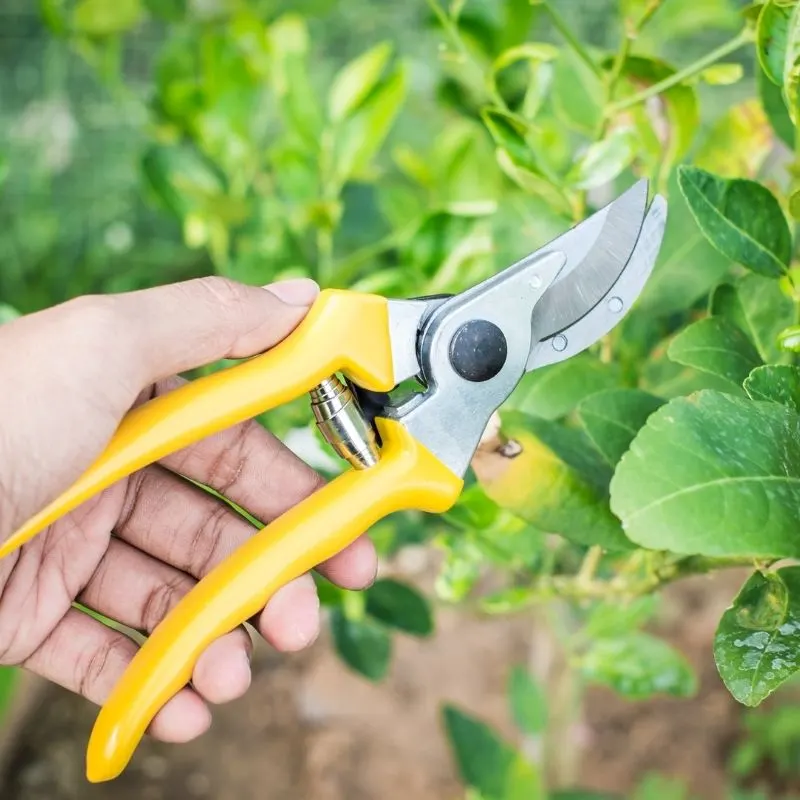
Hand pruners typically use a bypass blade to cut plants. They should fit in hand comfortably and have more cutting power than snips. In general, hand pruners can cut green branches up to ½ inch in diameter. Anything larger, you may want to pull out the loppers.
Loppers
Loppers are similar to bypass hand pruners, but with longer handles for increased leverage. These tools can usually cut any green branch that comfortably fits between the blades - especially if it has a ratchet mechanism.
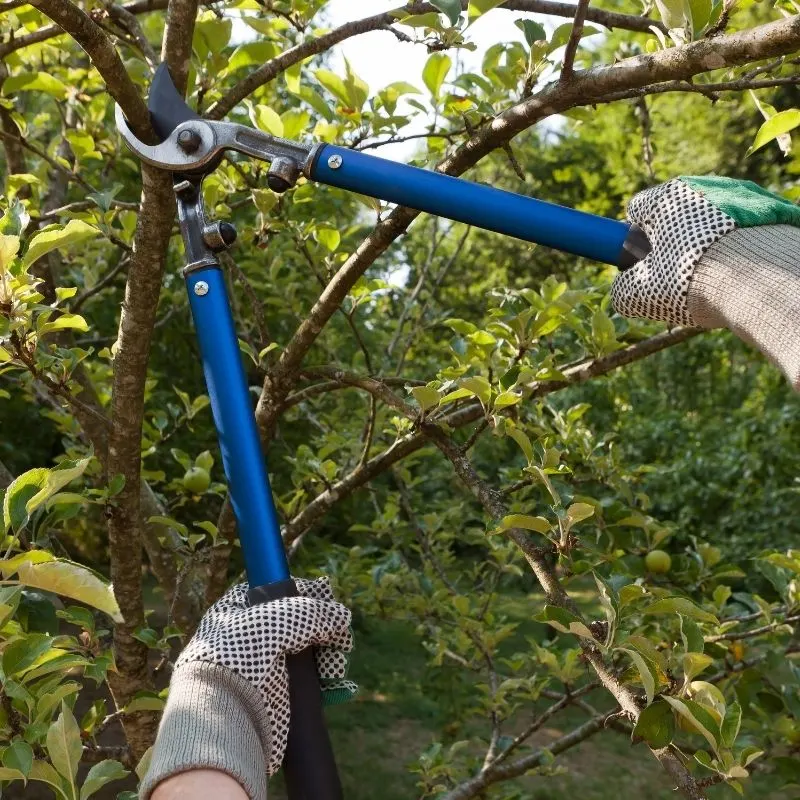
If you have lots of dead branches that need trimming, you may want loppers with the anvil cutting mechanism. Anvil loppers are not typically recommended for pruning live branches, as they tend to crush and damage the plant. However, dead branches may require the added stability and force of anvil loppers.
Hedge Shears
Hedge shears are those large shears you wield to create elaborate topiaries, as well as straight, orderly rows of shrubs. They have long blades resembling a giant pair of scissors.
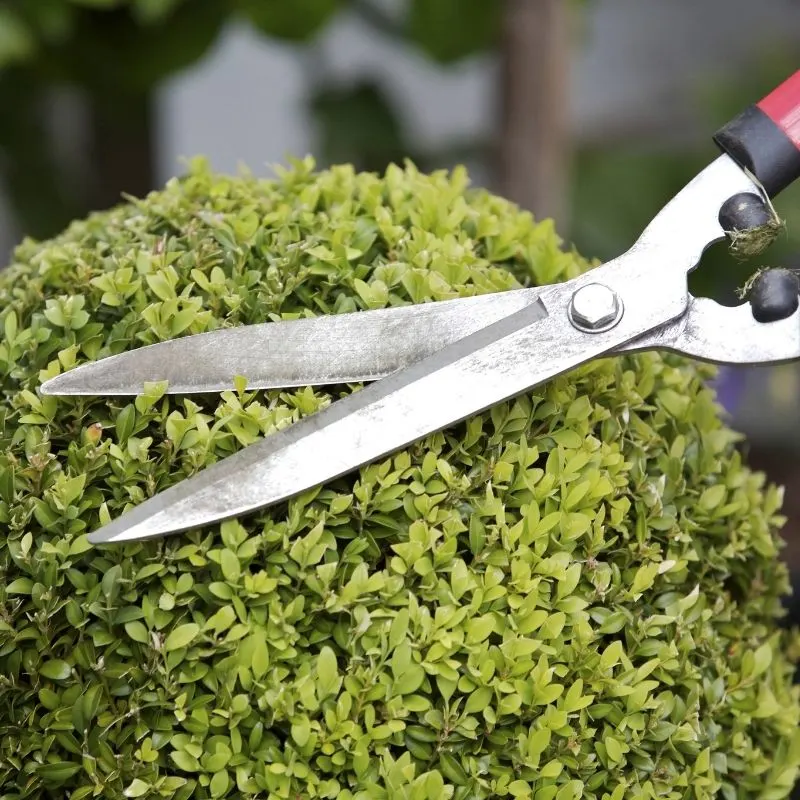
Use hedge shears to prune hedges (obviously). Their long blades allow them to cut across a broad surface and efficiently shape a bush. I also like to use them to cut back ornamental grasses in one fell swoop!
Make sure to take a step back and examine your work every once in a while. You don't want a lopsided hedge from overly enthusiastic cutting!
Pruning saw
Pruning saws come in several designs. Usually, you can find these saws with a blade that folds into the handle. Use the pruning saw for branches that are too large for the lopper. Branches from 2-8 inches in diameter can be fair game, depending on the size of your saw.
Look for a pruning saw with a blade that can flip from an overhand to an underhanded cut, like the one shown above. This makes it much easier to create a relief cut on the branch's underside first to prevent the bark from tearing out and damaging the tree when it gives way.
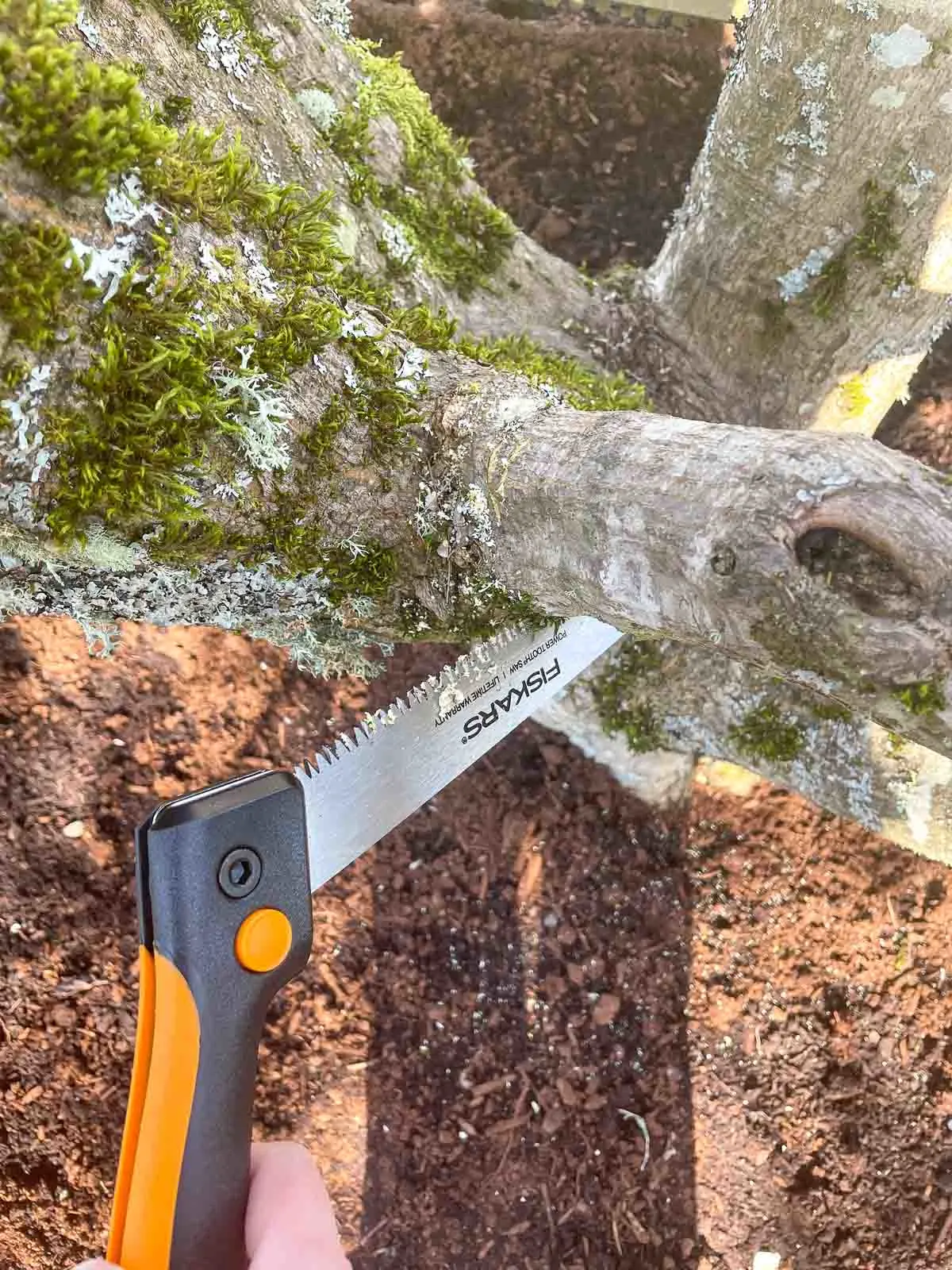
Also, take a look at the angle of the cutting teeth on the blade. If your pruning saw was designed to cut on the pull stroke, you could waste a lot of energy trying to cut on the push stroke!
Pole saw
A pole saw is, essentially, a pruning saw attached to a long pole. This added length allows you to prune branches that would otherwise be out of reach.
A manual pole saw will typically have two different methods of cutting branches. The first is a long blade that you pull back and forth like a pruning saw. The second method is an anvil type cutter that you can hook onto a smaller branch. There's usually a rope that you pull to close the blade down on the wood.
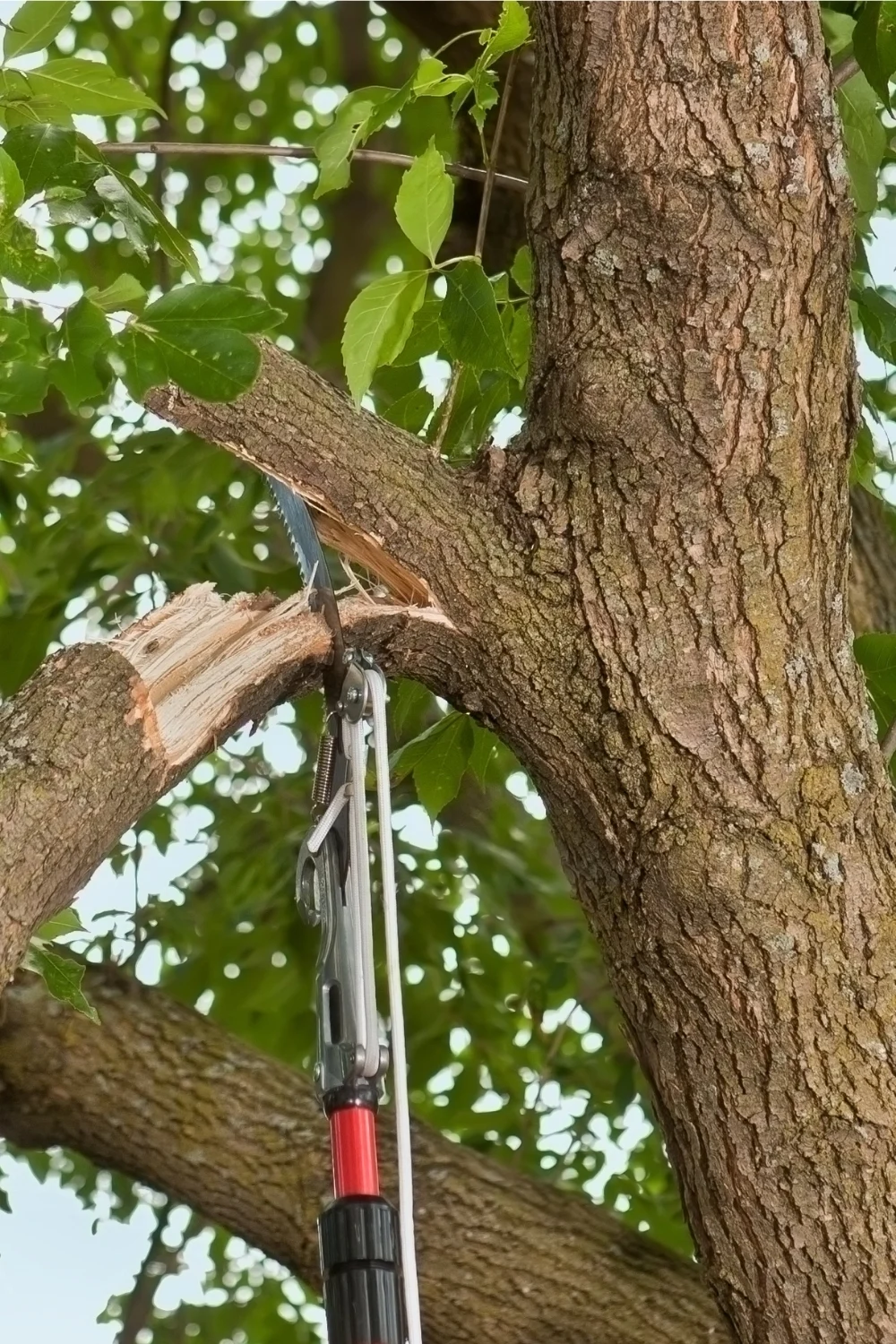
When using the manual pole saw, use that long, flexible pole to your advantage! You want to push the pole when it's flexed up and pull when it's flexed down. Check out the video below to learn more about this technique.
Electric pole saws like this one make the job quick and easy! It's basically a battery powered chain saw on a stick, so take the proper precautions when using this tool. A hard hat and safety glasses protect your head and eyes from falling debris.
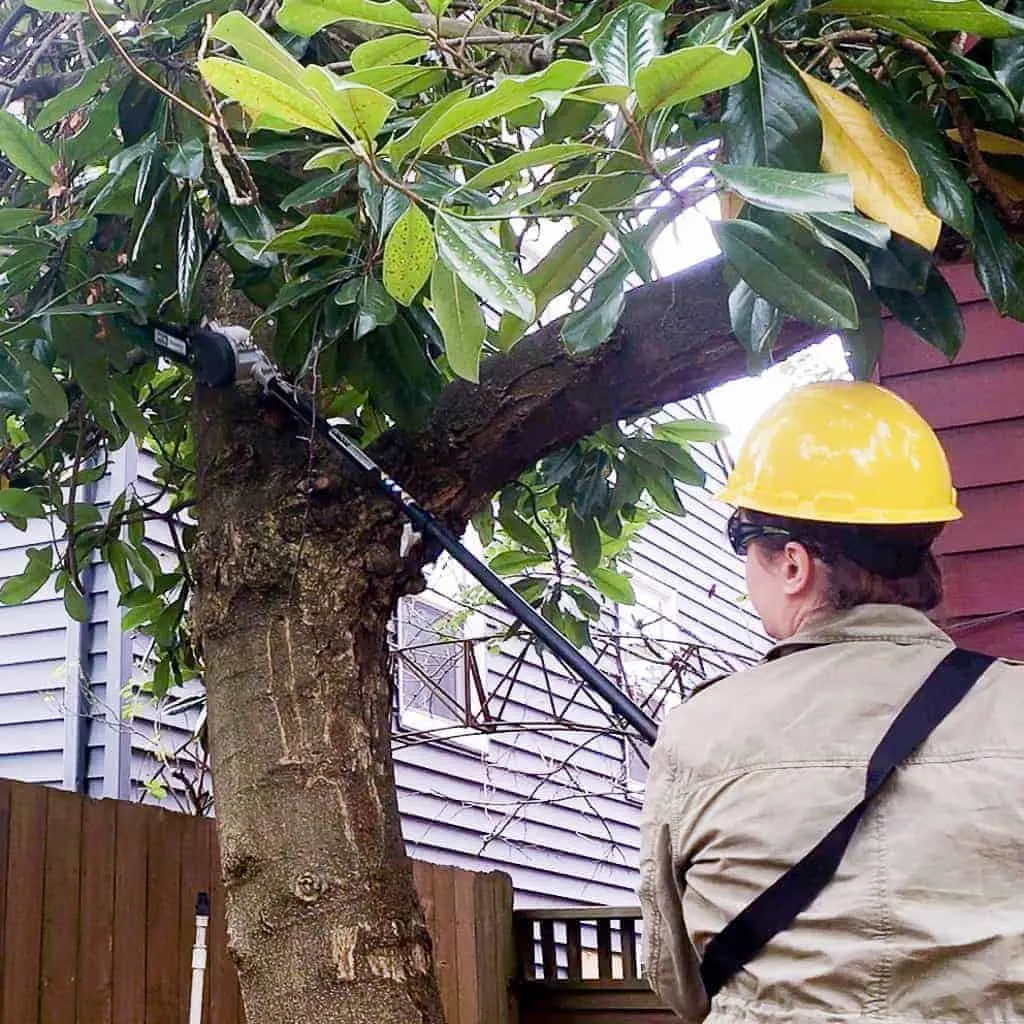
Frequently Asked Questions
Now that you know what all these pruning tools are and how they work, let's go over a few common questions. Hopefully, this section will put your mind at ease and give you the confidence to attack your list of gardening tasks.
Can you use regular scissors to prune?
While you could certainly get away with trimming very young plants or grass with a pair of household scissors, they're not really up to the task for anything bigger. Also, household scissors don't usually have wide finger holes - this makes it difficult to use them while wearing gardening gloves.
What are the advantages of pruning?
Pruning stimulates growth, inhibits disease, and improves a plant's aesthetics. When you cut the stem of a plant, called a heading cut, you promote further growth below the cut. When you cut a dead branch, you keep your plant healthy and prevent disease. Sometimes all your plant needs is a little haircut to perk it up!
Where do I cut when pruning?
Where you cut depends on the type of plant and what you're trying to achieve by pruning.
For pruning trees and woody plants, cut the branch just before the collar. The collar is that little nub at the junction between branches, as seen along the dotted line below. Leave the collar intact so the plant can heal quickly and prevent disease. You can learn more about how to prune trees here.
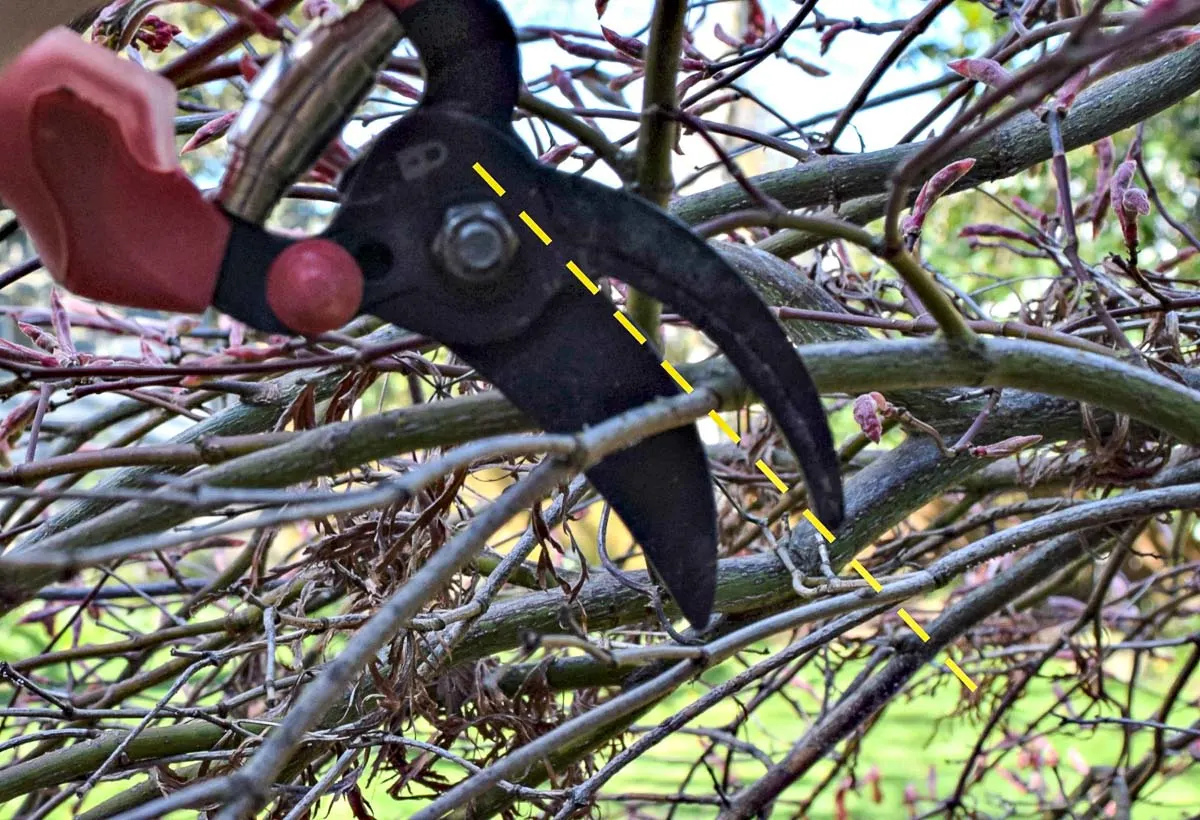
To encourage fuller growth on a shrub or smaller plant, prune just above a set of buds, leaves or stems. This will signal to the plant that it should put its effort into those side shoots, not more vertical growth.
Hopefully this guide helped take some of the mystery out of shopping for pruning tools. Now it's time to tackle all those gardening tasks and make your outdoor spaces beautiful!
